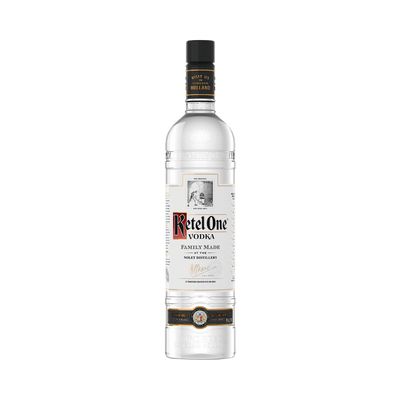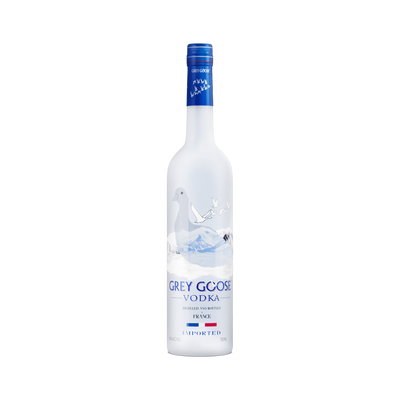Grain Vodka
What is Grain Vodka?
Grain vodka is a specific type of Unflavored Vodka distilled from cereal grains like wheat, rye, corn, or barley rather than other base materials such as potatoes or sugar beets. What defines grain vodka is its foundation in these cereal crops, which typically produces a cleaner, more neutral flavor profile compared to vodkas made from other raw materials. The choice of grain can subtly influence the final character—wheat tends to create silkier textures, while rye adds a slight spiciness—making grain vodkas popular among both mixologists and neat sippers.
Learn More About Grain Vodka
What makes Grain Vodka unique?
Grain vodka stands apart from other unflavored vodkas through its distinctive creamy mouthfeel and subtle sweetness that comes from cereals like wheat, corn, or rye. While potato vodkas offer earthy richness and sugar beet vodkas bring clean neutrality, grain-based spirits maintain a gentle warmth and smooth texture that makes them incredibly versatile for both sipping neat and mixing in cocktails. The specific grain used also influences the final character—wheat creates silky smoothness, corn adds natural sweetness, and rye contributes a slight spicy edge that distinguishes each variation within the grain vodka family.
How is Grain Vodka made?
Grain vodka starts with cereal grains like wheat, corn, or rye that get mashed and fermented with yeast to create a low-alcohol wash. This fermented liquid then goes through multiple distillation cycles in column stills to strip away impurities and concentrate the alcohol to around 95% ABV. The high-proof spirit gets filtered through activated carbon or other materials before being diluted with pure water down to bottling strength, typically 40% ABV.
How do you drink Grain Vodka?
Grain vodka shines brightest in cocktails where its clean, neutral character provides the perfect foundation for other ingredients to take center stage. You'll find it starring in classics like martinis, Moscow mules, and cosmopolitans, as well as refreshing mixed drinks with fruit juices, sodas, or tonic water. While some premium grain vodkas can be sipped neat or on the rocks to appreciate their smoothness, most people prefer them mixed since the subtle grain notes really come alive when paired with complementary flavors in well-crafted cocktails.
How do I choose good Grain Vodka?
When selecting grain vodka, focus on the source grain and distillation method—wheat-based vodkas tend to offer a softer, creamier mouthfeel, while corn-based varieties provide clean neutrality that works beautifully in mixed drinks. For cocktails where vodka plays a supporting role like Moscow Mules or Bloody Marys, a well-made but affordable grain vodka does the job perfectly, but if you're making martinis or sipping neat, invest in premium bottles that showcase subtle grain character and silky texture. The key is matching the vodka's personality to your intended use: neutral and clean for fruit-forward cocktails, or something with gentle grain sweetness when the spirit needs to shine through.
Nutritional Information
Typical Calorie Range per Ounce: 64-70 calories
Typical Carbohydrate Range per Ounce: 0 grams
Typical Sugar Range per Ounce: 0 grams
Typically Gluten Free: No
Grain vodka presents an interesting case when it comes to gluten content. While the distillation process theoretically removes gluten proteins, many grain-based vodkas are produced from wheat, rye, or other gluten-containing grains. The final product may still contain trace amounts of gluten that could affect those with celiac disease or severe gluten sensitivity.
If you're following a gluten-free lifestyle, you'll want to look for vodkas specifically labeled as gluten-free or those made from alternative sources like potatoes, corn, or rice. Always check the detailed product information and manufacturer specifications to confirm gluten-free status, especially if you have celiac disease or significant gluten intolerance.
Scrolled this far? Your reward? Grain Vodka Trivia!
- Most American grain vodkas are actually made from corn, not wheat like many people assume. Corn produces a naturally sweeter, creamier spirit that's cheaper to distill than traditional wheat or rye. That's why brands like Tito's proudly stamp "corn vodka" right on their bottles - they're celebrating what used to be considered the budget option.
- The famous "neutral grain spirits" that become vodka often start life as something much stronger than you'd expect. Before the final distillation, grain vodka can clock in at 190 proof (95% alcohol) - so potent it's basically liquid fire. The distillers then proof it down with water to the 80 proof bottle you know and love.
- Polish potato vodka enthusiasts have a saying: "grain vodka is just baby whiskey that never grew up." This isn't entirely wrong - both grain vodka and whiskey start with the same mashed grains and fermentation process. The difference? Vodka gets distilled multiple times to strip away flavor, while whiskey embraces those grain characteristics and adds barrel aging.
- During Prohibition, bootleggers discovered that grain vodka was the perfect base spirit because it could be flavored to mimic expensive liquors. A little caramel coloring and vanilla extract turned cheap grain vodka into "aged whiskey," while juniper berries created instant "gin." The feds caught on, but not before grain vodka earned its reputation as the chameleon of spirits.
- The smoothest grain vodkas aren't necessarily distilled the most times - they're often filtered through activated charcoal made from coconut shells or birch wood. This filtration can take days and removes the harsh congeners (flavor compounds) that cause burn. Some premium brands filter their grain vodka up to 10 times, which is why a $50 bottle goes down like water while bottom-shelf versions make you wince.
Higher-proof spirits can be intense. Mix carefully, taste thoughtfully, and enjoy responsibly.
Gift message (optional)


